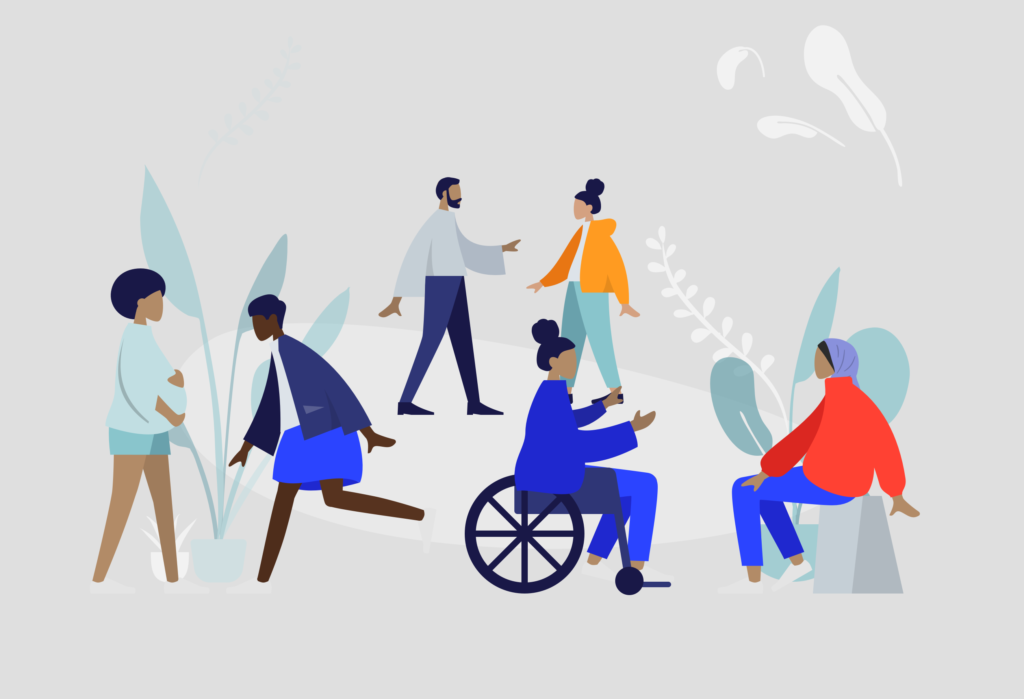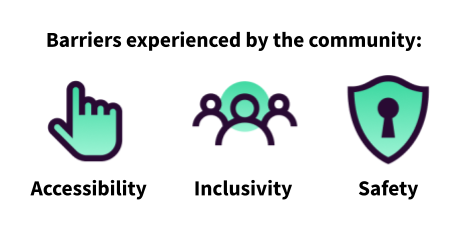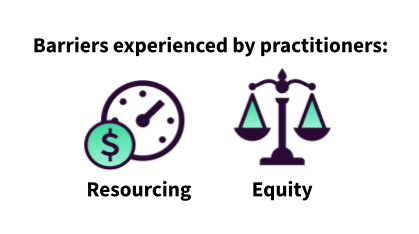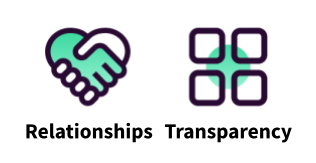Our Report on Public Engagement Barriers

Rachel Levenstein
Head of Survey Research and PhD in survey science
Our research insights on inclusive engagement from community members and engagement practitioners
Are you an organization that is trying to develop an inclusive engagement culture and practice in your organization? If yes, we are too! Read the article below or our full report to learn more.
2020 was an unprecedented year for humanity. We already knew that our world is an inequitable one. The global COVID-19 pandemic made this clearer with heightened socioeconomic polarities along with the year’s racial injustices.
As a socially-minded company, we focus on building better communities through technology. Yet providing a tool for community engagement was not enough. We want inclusive engagement. This doesn’t mean only aiming for a diversity of participants (because that’s obvious). It’s also about facilitating a frictionless process for all. And considering the external factors outside of an engagement that present barriers.
Understanding engagement starts with barriers. We need to understand both the barriers experienced with engagement and why some don’t get involved. An engagement might not be successful, if you haven’t addressed these other issues.
So, what did we do?

We ran a 2-month research initiative that focused on the experiences of folks from untapped communities. Our goal was to gain a deeper understanding of the challenges surrounding inclusive engagement through a survey, in-depth interviews and a workshop with community members and engagement practitioners. We did our own outreach into communities and learned that while some might be harder-to-reach, it’s also not impossible. And, we learned a lot about what makes or breaks inclusive engagement.
We don’t pretend to be experts in this space – after all, who can be with regional and institutional differences? But we found the insights valuable and in an effort to help facilitate more inclusive engagement, we will share these insights.
The following article will take you through a high-level overview of our following themes (which have a high degree of overlap):
- Why people don’t get involved
- Barriers to effective engagement
- Elements of effective engagement
Why people don’t get involved
“We want people to be involved, but they aren’t. There is so much apathy.”
Does this sound familiar?
We also hypothesized that apathy was something to overcome. But our research dug deeper to really understand apathy. What we saw is that apathy is a perception and there are very real reasons why people don’t get involved. What it comes down to is the following:

At a high level, consider things like:
- Are you informing people in spaces and ways that make sense to them? For example, what kind of media do they resonate with and use the most? It will differ between cultural groups, age and even lifestyle. Some might not even use media and are more reliant on other forms of communication.
- Is your engagement accommodating of different people’s schedules? Are there alternative ways for them to engage if scheduling is an issue?
- Is your engagement relevant to someone? If so, are they aware of the impacts of what you are trying to engage them on has on them?
- What priority of relevance does your engagement hold in someone’s life? Are they someone who has “bigger fish to fry” so to speak? If so, how do you make it valuable for this person to get involved?
- How much are people able to influence the decision and how transparent are you about this?
- What kind of historical relationship do they have with your organization and how does this have an impact on their perspectives?
Barriers to effective engagement
“I want to be involved, but it’s hard to.”
“We want to have more inclusive engagement, but it’s hard to.”
Whether you’re in the community or a practitioner – this probably sounds familiar as well. There is a large overlap between barriers to effective engagement and why people don’t get involved. In our research, we chose to separate this as a different theme. We saw that many of these barriers came from people who either are or have tried to get involved. The following are friction points that prevented their involvement, or led to disengagement.

At a high level, consider things like:
- What are the diverse needs of people you want to engage with? This may include different physical, cognitive, cultural and technical traits. Does your engagement provide information, time and ways to take part that matches these diverse needs?
- How inclusive and safe do your spaces and engagements feel?
- How deep does inclusivity run in your organization? How does this impact perceptions of trust, safety, relationships, etc?
- Ultimately, the ability to dismantle barriers is an undertaking and what we saw from our practitioners is that there are challenges in achieving this.

Within an organization, especially those designing and running engagements, time and financial and human capital doesn’t just magically appear. These organizations are still bound by variable statutes that can impact what is feasible in a given timeline. Budgets and how they are allocated exist. People move on from an organization, go on vacation or on parental leave. And finally, even amongst those in the public who are most involved (such as community associations) variations in equity ultimately impact whose voices get heard.
With this in mind and the objectives for more inclusive engagement, we end dancing around the realm of transformational design and in doing so it’s important to consider things like:
- What systems need to be in place to make inclusive engagement more efficient and consistent?
- What is the effort and time involved in getting these systems in place?
- Is there support for getting these systems in place? Who are your allies in the organization who will not only be cheerleaders, but enablers?
- Which community associations have more human and financial resources?
Elements of Effective Engagement
Okay – so we know some of the reasons why people don’t get involved and what barriers they face even if they do want to get involved. What about effective engagement? Past the obvious need for inclusivity – what actually makes engagements more effective? What we heard from our research was the following:

This might seem obvious as these are also the things that make effective engagement at interpersonal and business scales. But, like anything – it’s not always the easiest to be able to see through. Some considerations when thinking about relationship building and transparency in your engagements include:
- What types of engagements are most effective in building relationships with undertapped communities?
- Are you proactively building relationships with new people?
- At what point in the engagement process can you be transparent and how do you share this information?
- Are you able to recognize your own blindspots in order to even be transparent about them?
Summary

Inclusive engagement isn’t easy work, especially if your organization is earlier in the growing process. There are so many factors that impact inclusive engagement efforts. In this work, the important thing to remember is that it is a marathon and not a sprint. Your efforts now will contribute to systems that will make efforts in the future more sustainable by laying the groundwork.
If you need some inspiration on how to start laying this foundation, check out Part 1 and Part 2 of our guide “Lessons for Civic Engagement”.
%20copy-1.png?width=544&height=120&name=Logo_black%20(1)%20copy-1.png)



